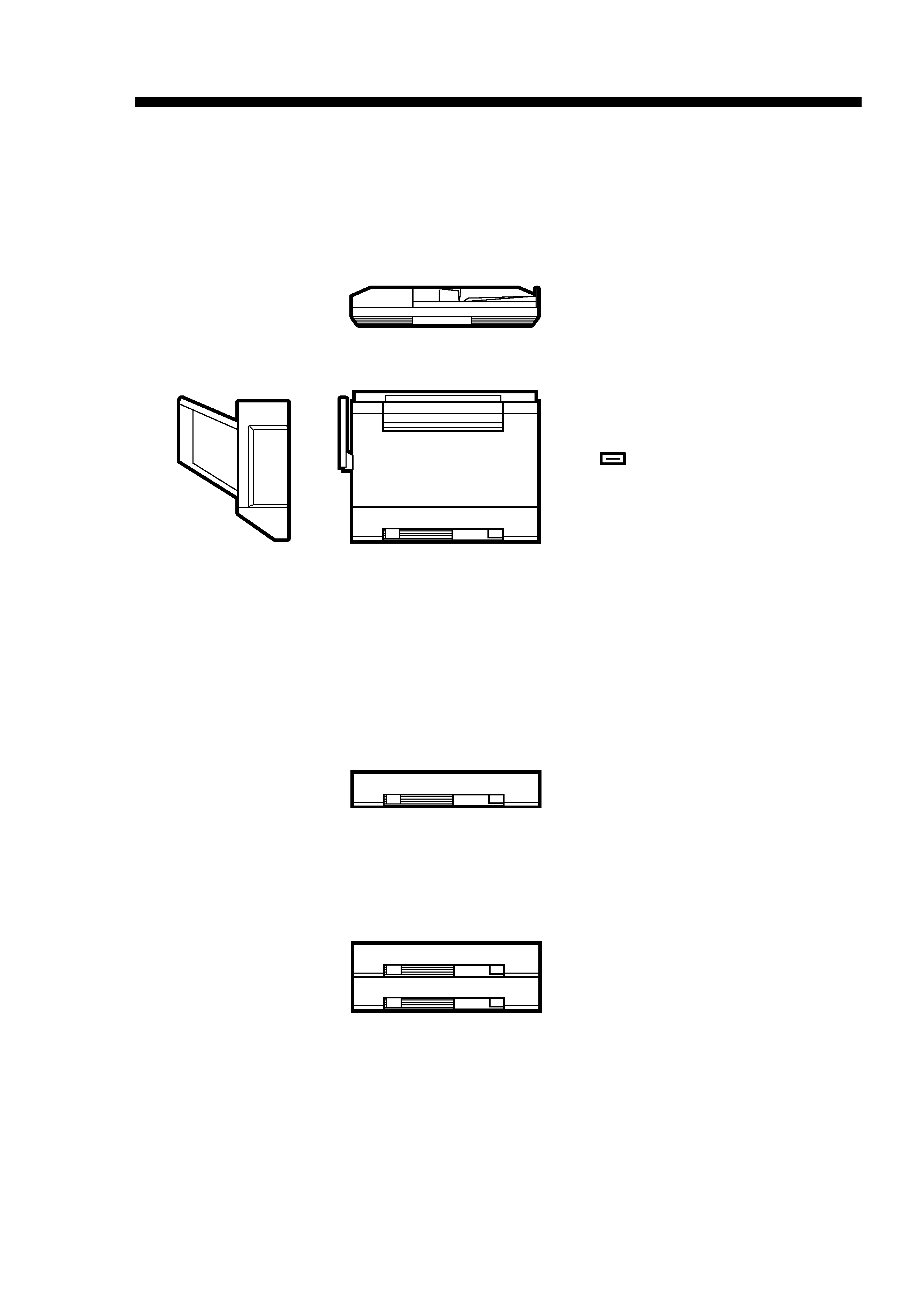
SERVICE
MANUAL
REVISION 0
FY8-13EX-000
MAY 1997
COPYRIGHT © 1997 CANON INC.
CANON NP6218 REV.0 MAY 1997 PRINTED IN JAPAN (IMPRIMÉ AU JAPON)

IMPORTANT
THIS DOCUMENTATION IS PUBLISHED BY CANON INC., JAPAN, TO SERVE AS A SOURCE OF
REFERENCE FOR WORK IN THE FIELD.
SPECIFICATIONS AND OTHER INFORMATION CONTAINED HEREIN MAY VARY SLIGHTLY FROM
ACTUAL MACHINE VALUES OR THOSE FOUND IN ADVERTISING AND OTHER PRINTED MATTER.
ANY QUESTIONS REGARDING INFORMATION CONTAINED HEREIN SHOULD BE DIRECTED TO
THE COPIER SERVICE DEPARTMENT OF THE SALES COMPANY.
THIS DOCUMENTATION IS INTENDED FOR ALL SALES AREAS, AND MAY CONTAIN
INFORMATION NOT APPLICABLE TO CERTAIN AREAS.
COPYRIGHT © 1997 CANON INC.
Printed in Japan
Imprimé au Japon
Use of this manual should be strictly
supervised
to
avoid
disclosure
of
confidential information.
Prepared by
OFFICE IMAGING PRODUCTS TECHNICAL SUPPORT DEPT. 1
OFFICE IMAGING PRODUCTS TECHNICAL SUPPORT DIV.
CANON INC.
5-1, Hakusan 7-chome, Toride-shi, Ibaraki 302 Japan
COPYRIGHT © 1997 CANON INC.
CANON NP6218 REV.0 MAY 1997 PRINTED IN JAPAN (IMPRIMÉ AU JAPON)

This Service Manual contains the bsic facts and figures about the plain paper copier
NP6218, and is compiled to serve as a handy reference for servicing the machine in the
field.
The NP6218 is designed to enable fully automated copying work and may be
configured with the following accessories:
1. Cassette Feeding Module-B2*
2. Cassette Feeding Module-A2*
3. Control Card IV N
4. ADF-E1
5. Staple Sorter B2/D1
6. MS-B1
7. Remote Diagnostic Device II
This manual is limited to the descriptions of the NP6218, Cassette Feeding Module-
B2/Cassette Feeding Module-A2.
* May not be available in some areas but discussed in this manual.
This Service Manual covers the copier only, and consists of the following chapters:
Chapter 1
General Description introduces the copier's features and specifications,
shows how to operate the copier, and explains how copies are made.
Chapter 2
Basic Operation provides outlines of the copier's various mechanical
workings.
Chapter 3
Exposure System discusses the principles of operation used for the
copier's lens drive unit and scanner drive unit. It also explains the timing
at which these drive units are operated, and shows how they may be
disassembled/assembled and adjusted.
Chapter 4
Image Formation System discusses the principles of how images are
formed. It also explains the timing at which the various units involved in
image formation are operated, and shows how they may be
disassembled/assembled and adjusted.
Chapter 5
Pick-Up/Feeding System explains the principles used from when copy
paper is picked up to when a copy is delivered in view of the functions of
electrical and mechanical units and in relation to their timing of operation.
It also shows how these units may be disassembled/assembled and
adjusted.
Chapter 6
Fixing System explains the principles used to fuse toner images to
transfer media in view of the functions of electrical and mechanical units
and in relation to their timing of operation. It also shows how these units
may be disassembled/assembled and adjusted.
Chapter 7
Externals/Auxiliary Mechanisms shows the copier's external parts, and
explains the principles used for the copier's various control mechanisms
in view of the functions of electrical and mechanical units and in relation
to their timing of operation. It also shows how these units may be
disassembled/assembled and adjusted.
Chapter 8
Installation introduces requirements for the site of installation, and shows
how the copier may be installed using step-by-step instructions.
INTRODUCTION
COPYRIGHT © 1997 CANON INC.
CANON NP6218 REV.0 MAY 1997 PRINTED IN JAPAN (IMPRIMÉ AU JAPON)
i

Chapter 9
Maintenance and Servicing provides tables of periodically replaced parts
and consumables/durables and scheduled servicing charts.
Chapter 10
Troubleshooting provides tables of maintenance/inspection,
standards/adjustments, and problem identification (image
fault/malfunction).
Appendix contains a general timing chart and general circuit diagrams.
In addition to the above chapters, this SERVICE MANUAL contains a set of
appendixes consisting of a general timing chart and general circuit diagrams.
A separate document entitled SERVICE HANDBOOK is also available for
troubleshooting problems in the copier.
The following rules apply throughout this volume:
1. Each chapter contains sections explaining the purpose of specific functions and the
relationship between electrical and mechanical systems with reference to the
timing of operation.
In the diagrams,
represents the path of mechanical drive--where a
signal name accompanies the symbol
, the arrow indicates the direction
of the electric signal.
The expression "turn on the power" means flipping on the power switch, closing the
front door, and closing the delivery unit door, which will result in supplying the
machine with power.
2. In the digital circuits, `1' is used to indicate that the voltage level of a given signal is
"High," while `0' is used to indicate "Low." (The voltage value, however, differs from
circuit to circuit.)
In practically all cases, the internal mechanisms of a microprocessor cannot be
checked in the field. Therefore, the operations of the microprocessors used in the
machines are not discussed: they are explained in terms of from sensors to the
input of the DC controller PCB and from the output of the DC controller PCB to the
loads.
The contents of this manual may be updated from time to time to reflect improvements
rendered to the copier; a Service Information bulletin will be issued as necessary to
cover major changes.
All service persons are expected to be thoroughly familiar with the information
contained in this manual, SERVICE HANDBOOK, and Service Information bulletins, for
quick response to the user's needs.
COPYRIGHT © 1997 CANON INC.
CANON NP6218 REV.0 MAY 1997 PRINTED IN JAPAN (IMPRIMÉ AU JAPON)
ii

System Configuration
The NP6218 may be configured with the following systems options:
COPYRIGHT © 1997 CANON INC.
CANON NP6218 REV.0 MAY 1997 PRINTED IN JAPAN (IMPRIMÉ AU JAPON)
iii
ADF-E1
Sends originals one by one from
a stack set on its tray
Stapler Sorter B2/D1, MS-B1
Automatically sorts or (page collation)
or groups up to 10 sets of copies;
with the sorting function,
the sorted copies may
automatically be stapled.
(Not applicable to MS-B1.)
Control Card IV N
Allows the user to control
copy volume.
Cassette Feeding Module-A2
Adds additional two cassettes.
Cassette Feeding Module-B2
Adds an additional cassette.
